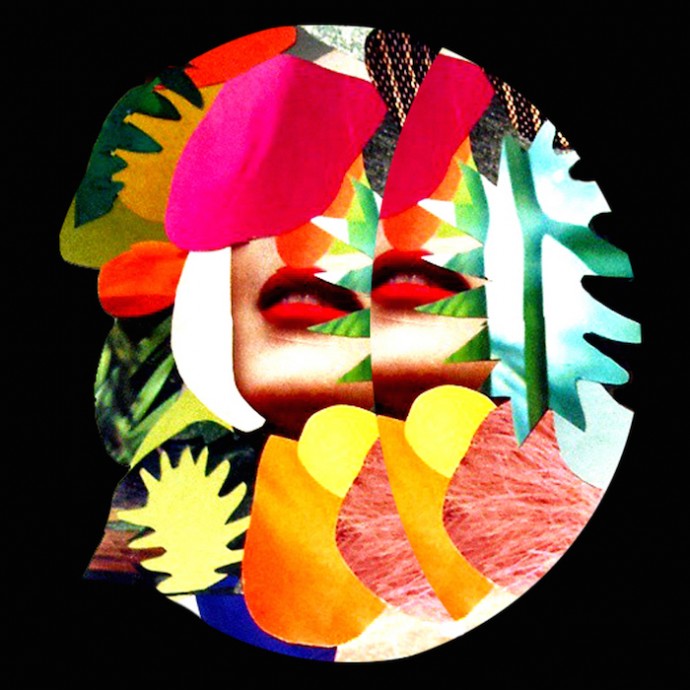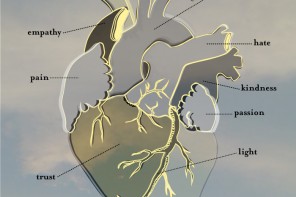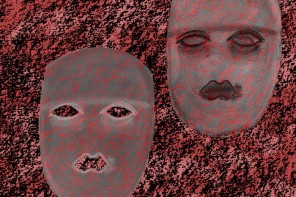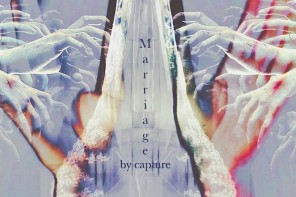What happens when the lines between senses begin to blur? When you can taste words, feel voices, see music? Synesthesia, an unusual neurological phenomenon, allows some people to experience these unique sensory mashups. In many cases, synesthetes channel these irregular perceptual experiences into creative energy, making use of their unique sensory inputs. Sensa Nostra speaks to WindUp Bird, a Berlin-based electronic artist who paints landscapes with her music.
When I think of numbers or letters, there are always certain colours associated with each. Sometimes different smells have different colours. I feel textures and see shapes when technically I should only be hearing, and I experience coloured sounds and, most notably, coloured music.
When I listen to a piece of music I experience an associated colour palette in my mind’s eye. I know if I try to focus on it too hard, it skitters away, but in relaxing my mind I can start to perceive more of the details and the colours. I’ll get a strong sensation that this particular piece is feeling very blue, and this part over here has little yellow brush-strokes. Music becomes more like a landscape to me and when I’m making music I always feel it’s akin to painting with sound.
I also have the unusual experience of feeling textures and shapes that are related to the musical waveform. Things like more metallic, rhythmic sounds – things that don’t have a musical tone to them – tend to not have so much colour, but more texture. Something like that I’ll physically feel on my hands as smooth and metallic.
In my own work, I begin with a good loop or a unique sound – something that’s got a really interesting timbre as well as aural complexity. I enjoy sounds that involve distortion because it adds these interesting little prickly things and comes across as grainy. It feels like I’m sliding my hands across something metallic that has these little tiny fine bits in it. I really like that and I love a well-crafted synth sound that has a very complex texture for that reason.
When I make my music I often veer into blue tones and more minor modal chords because they have deeper richer colours than the happy, bright colours of major chords. I’ve got certain sounds I go back to but it’s a constantly shifting process. What I really love about electronic music is that there’s such a variety of timbres and sounds. It’s a richer palette to work with – its always changing, there’s always something else.
When I write, I’ll find a nice pad or synth that I like and I can pick out complimentary sounds that go with that – that’s how I build my pieces. Selecting for the sounds according to colour is usually a very subconscious process – I must be in a blue mood at the time and feeling drawn towards this blue colour. So I look to see what things develop subconsciously.
The colour and texture of the sound are what allow me to find other sounds that work inside it. It becomes so much like crafting a painting – if I’ve got something that’s a deep purple colour, then I know these sounds will work well with that tone and these are good accent colours, good accent shapes. The same instrument might have different qualities of sound and those differences influence the shade of the colour, or the shape of the sound itself. I let it build on itself and I can look at other sounds and know that they won’t work within that piece because they don’t fit with my colour palette.
Seeing and feeling music also means that there are certain instrument and sound combinations that I don’t like because they create unpleasant shapes or colours. Certain timbres are not exciting or interesting to me, or they’re jarring so I tend to avoid those instruments. For example, I get really bored with traditional rock ensembles because guitar has never excited me as a timbre; orchestral pieces have sounds that are too clearly defined and not complex enough.
When I find a piece that resonates with me, I love to enjoy it in a sort of reduced sensory environment – in a dark, silent room with headphones on – so I can immerse myself in the musical experience. It’s such an all-encompassing thing. I tend to have that same immersive experience when I’m creating music. It gets very emotional because it really does become a landscape and a narrative of colours. I know that I’ve made something that’s right when it triggers that kind of seizing feeling you get when you’re about to cry. If I can trigger that repeatedly at points in the piece, I know that I’ve really captured something important.
Emotions are coloured as well and this feeling becomes a very fundamental point in the creative process – that finally I’ve captured the nuance of that particular moment. It’s usually only a split second and then it’s gone so it’s a very ephemeral sort of experience. But that’s why I enjoy making music. The music and the colours and the whole experience somehow captures a snapshot for me of a particular moment and expresses that emotion.
Aside from the creative benefits of synesthesia, I’ve found it also has drawbacks. I find it very difficult to concentrate when people play music in the background in places where I need to focus – in school or work situations it draws my attention away from whatever I’m supposed to focusing on. I cant sleep with music either – I’ve known people who play music when they go to bed because it’s relaxing but to me it’s just an inescapable busyness occupying my mind. Different kinds of music are more prone to monopolising my attention. When I go to techno clubs it’s harder for me to dance because it’s so all-encompassing in my brain. I’m so focused on the subtle changes and the measure of the music that it becomes hard for me to coordinate bodily movements. Whereas crunchy things like goth music aren’t so interesting in terms of layering, so its easier to dance to.
These situations are not something I ever questioned until I read about synesthesia. Experiencing the world like this is how I’ve lived my whole life, but until my early twenties I didn’t realise most people didn’t navigate their existence the same way I did. That said, I think synesthesia, may not be such a unique phenomenon – our understanding of it as a perceptual anomaly may have more to do with recognition than occurrence. It may come down to way we’re taught to experience the world. Every kid grows up being told “You’ve got five senses with clearly delineated borders” and that’s all they know.
There’s this strange fetishization of the sixth sense but we have so much more than just those five senses to begin with, it’s just that they start to blend together. I think a lot of people do have more overlap, it’s just a question of how profound that overlap is and how aware of it you are.







